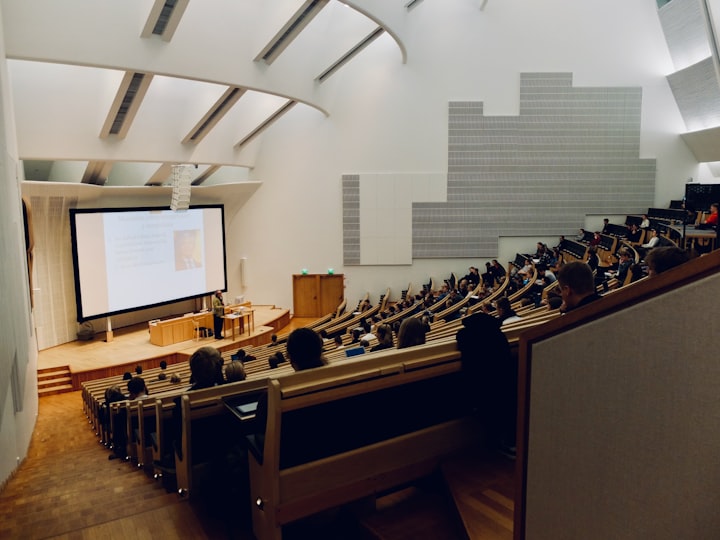Features of Education in Ancient Civilizations
The history of civilization can be traced back to the Middle East around 3000 BCE. Other civilizations came later, notably the North China civilization, the Mesopotamian and Egyptian civilizations, and the Indian civilizations.

The history of civilization can be traced back to the Middle East around 3000 BCE. Other civilizations came later, notably the North China civilization, the Mesopotamian and Egyptian civilizations, and the Indian civilizations. These civilizations differed in terms of their social stratification and the role of education systems. Let’s look at the key features of these and other civilizations:
Education in Ancient Africa
Education in ancient Africa was largely informal. Children acquired skills by apprenticeship, notably under the pupilage of blacksmiths, medicine men, traders, hunters, builders, and other professionals. Boys and girls were taught separately because they had different roles in society. Boys would be taught how to hunt, make spears, and do barter trade. Girls, on the other hand, would be taught pottery skills, cooking, and all other roles that their mothers had.
Education in ancient Africa also emphasized artistic performances and games. Young people would be taught how to conduct certain rituals and ceremonies, play certain games, and dance in specified festivals.
In Africa, only ancient Egypt had an education system that had a semblance of present-day education.
Education in Ancient Egypt
Formal education in ancient Egypt dates back to the 3rd millennium BC. The family was the basic unit of learning; kids were taught the economic activities that other family members engaged in. At the age of 5, children joined school and continued their studies in reading and writing until the age of 16 or 17.
The role of schools and education was to help a child transition into teenage and later young adulthood. Ancient Egyptians believed that men and women built the family on an equal basis, so they emphasized equality in education for both girls and boys.
Formal education in ancient Egypt also trained children in mathematics. Egyptians used mathematical calculations to construct canals, temples, and pyramids. Vocational skills such as architecture and engineering were taught informally but were held in high regard. This explains why their pyramids have remained to wow modern architects and engineers.
Children were regarded as the future of society and were, therefore, taught good morals. Children were expected to learn to listen to and obey their teachers without question; they were not to forget anything that the teacher said. Students had to memorize more than 700 hieroglyphs, which helped them hone their writing skills. Knowledge was portrayed in the language of hieroglyphics
Physical punishment was widely accepted in ancient Egypt. Children submitting to their teachers and parents was considered natural and necessary. This was particularly the case in military training. Young people were taught military art in order to become future soldiers. They would be taught to make and use weapons, to exercise for body strength, as well as the art of endurance and agility.
Apprenticeship was also popular in ancient Egypt. Children learned under the guidance of musicians, artisans, craftsmen, priests, and so on.
Education in Ancient India
Formal education in India can be traced to the 2nd millennium BC. There were two types of civilizations in India: The Hindu and the Buddhist civilizations.
i. Hindu civilization
In Hindu civilization, society was stratified into 4 groups:
Intellectuals or the Brahmans. This group produced the priests.
Nobles and soldiers or the Kshatriyas.
Agriculturalists and traders, also known as the Vaishyas.
Artisans and laborers or the Shudra.
In this civilization, education was anchored on religion where children were taught the art of prayer and worship. Religious studies were also concerned with other disciplines such as philosophy, morality, law, and government.
The stages of instruction in Hindu civilization were very well defined. Elementary education was offered at home. Boys would then undergo a ritual known as the upanayana which allowed them to transition to formal education. Boys from the Brahman strata underwent the upanayana at the age of 8, Kshatriya at the age of 11, and Vaishya at the age of 12. Formal education was provided by preceptors in their ashrama (home). Preceptors did not charge anything for education, food, or boarding. Pupils paid their preceptors by doing household chores and looking after cattle.
Formal education in an ashrama consisted of auxiliary sciences, grammar, and etymology. Children from the priestly class studied ancient Hindu scriptures, but it was not obligatory for the other groups. Learners were trained to live simple lives with regard to the clothes they were allowed to wear, the food they ate, and the hard beds they slept on. They also were taught to lead a celibate life. This period lasted for about 12 years.
After finishing their education at an ashrama, learners had the option of joining tertiary education. This phase was presided over by a kulapati (a respected philosopher). Students would engage in philosophical discussions, which helped them develop critical thinking, logic, and comprehension skills.
Education in Hindu civilization was not denied to women. However, girls were instructed at home. Girls were mostly taught by the use of parables.
ii. Buddhist civilization
This civilization occurred towards the end of the 6th BCE. During this era, education became generally confined to the Brahmans. The significance of the upanayana ritual also began to fade away within the non-Brahmans. The non-Brahmans started demanding equal access to education, as opposed to the case in the Hindu civilization where the Brahmans were held in higher regard.
Buddhism was also characterized by the monastic system of education where children would join monasteries in Buddhist temples both for priesthood training and formal education. Monasteries offered boarding facilities for learners. They didn’t admit day scholars. This was until the establishment of the imperialistic Mauryas dynasty that totally disrupted the social order in India. The Brahmans abandoned their priesthood calling and started taking all sorts of occupations. The Kshatriyas, on the other hand, stopped being warriors. All groups became equal and started getting equal chances in life. Schools were established across India and day scholars started being admitted. Learners were free to choose what they wanted to study. Teachers were also allowed to establish autonomous schools of their own.
Education in Ancient East (China)
Ancient Eastern civilizations defined the family unit as the primary source of education. Values, cultures, and history was taught in the family unit. Parents transmitted the cultural heritage of ancestors to their children.
Formal education was established around the 3rd-millennium B.C.E out of the need for young people who could read and write. Educational institutions were developed and run by a secular government and the clergy. The main focus of these institutions was speech and pictographic (patterned) writing.
Methods of teaching in the ancient East were largely conversational. Teachers held conversations with students and transmitted philosophical teachings to them. Teachers trained learners to be of high moral standing- to be more generous, truthful, and spiritual. Learned people were expected to have a higher desire for truth, accuracy, and reverence.
Just like in Africa, in ancient China, most children learned through apprenticeship. They learned how to plant rice or millet, rear chickens, and grow vegetables. Girls were not given an equal chance with boys with regard to formal education.
Education in Ancient Mesopotamia
Education in Mesopotamia borrowed greatly from Egyptian civilization.
Formal education was designed to train children of the upper class to become scribes and priests. Priestly education was considered supreme. Lower classes would be taught basic reading and writing, which prepared them to become librarians, copyists, and teachers.
Methods of teaching and learning in ancient Mesopotamia were memorization, oral repetition, and individual instruction. Learners who would copy scripts accurately were held in high regard because that was seen as excellence in learning.
Formal education was long and rigorous, and discipline was harsh.
The Civilization of the Maya
There aren’t many written documents available that talk about education in the Mayan civilization, However, the Mayan civilization showed an extraordinary degree of knowledge of astronomy and mathematics. We can deduce this fact from the superiority of the ancient Mayan calendar over Europe’s Julian calendar. That means the Mayan education system was anchored on mathematics. The Mayan writing system is also quite complex, which signifies the superiority of their education system.
The Mayans were very religious people. As such, it is believed that the major purposes of education were training priests, cultural conservation, and moral training.
Conclusion
Education in ancient civilizations was anchored on the division of labor, social stratification, and cultural conservation. Skills that were regarded as important were reserved for the upper class while the lower class settled for the lesser appealing skills. Lastly, the family unit played a significant role in the elementary education of children.






Comments
There are no comments for this story
Be the first to respond and start the conversation.